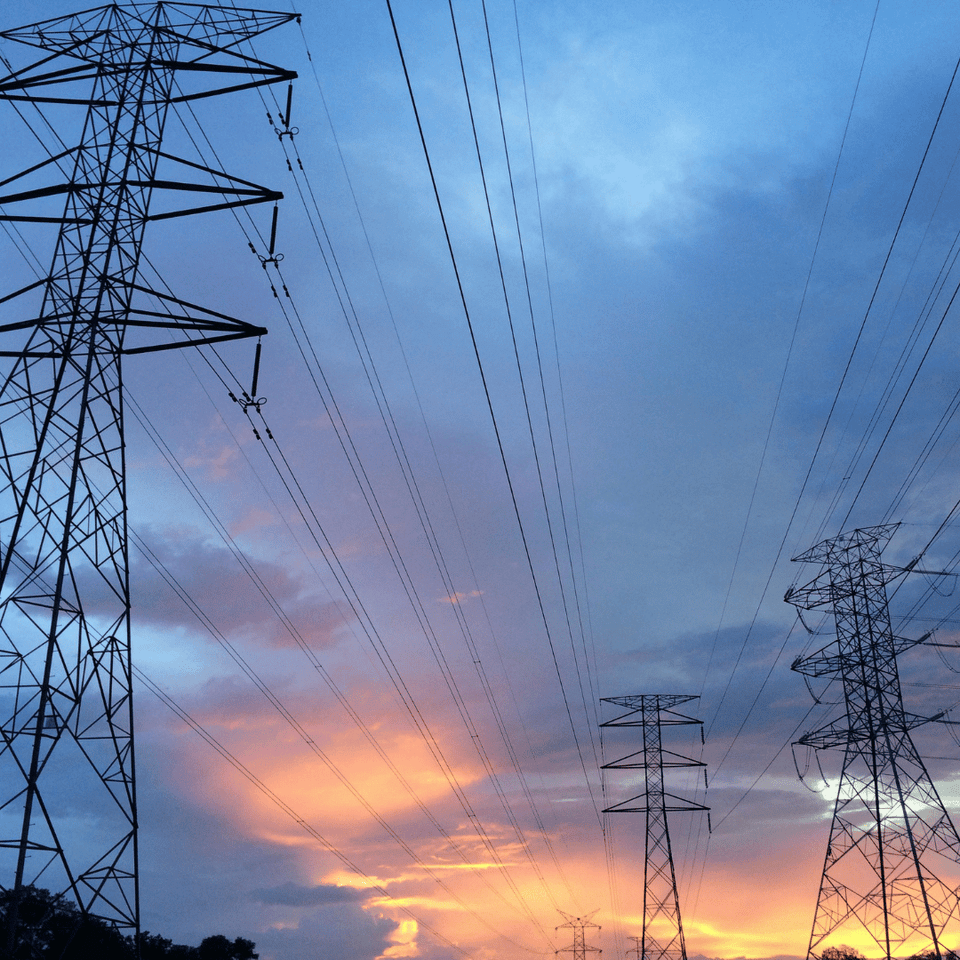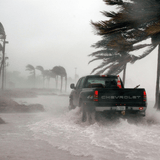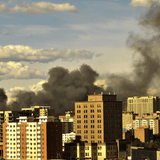Grid-Down Survival: Essential Surplus Gear for Long-Term Power Outages and Infrastructure Collapse
There are approximately 300 significant power outages in the United States each year. Most of these power outages last a day or less. Yet, even these short power outages can wreak havoc. That leaves us to wonder: what would happen during a long-term power outage—and how can we prepare?
Extreme Weather Is the Main Cause of Power Outages
Most major power outages are caused by severe natural disasters. For example, Hurricane Irma in 2017 caused 3.5 million people to lose power, and the winter storm of 2021 in Texas left 2 million without power.
Severe weather events are on the rise, which means blackouts are also increasing in frequency, and the outages are lasting longer.
Other Causes of Major Power Outages
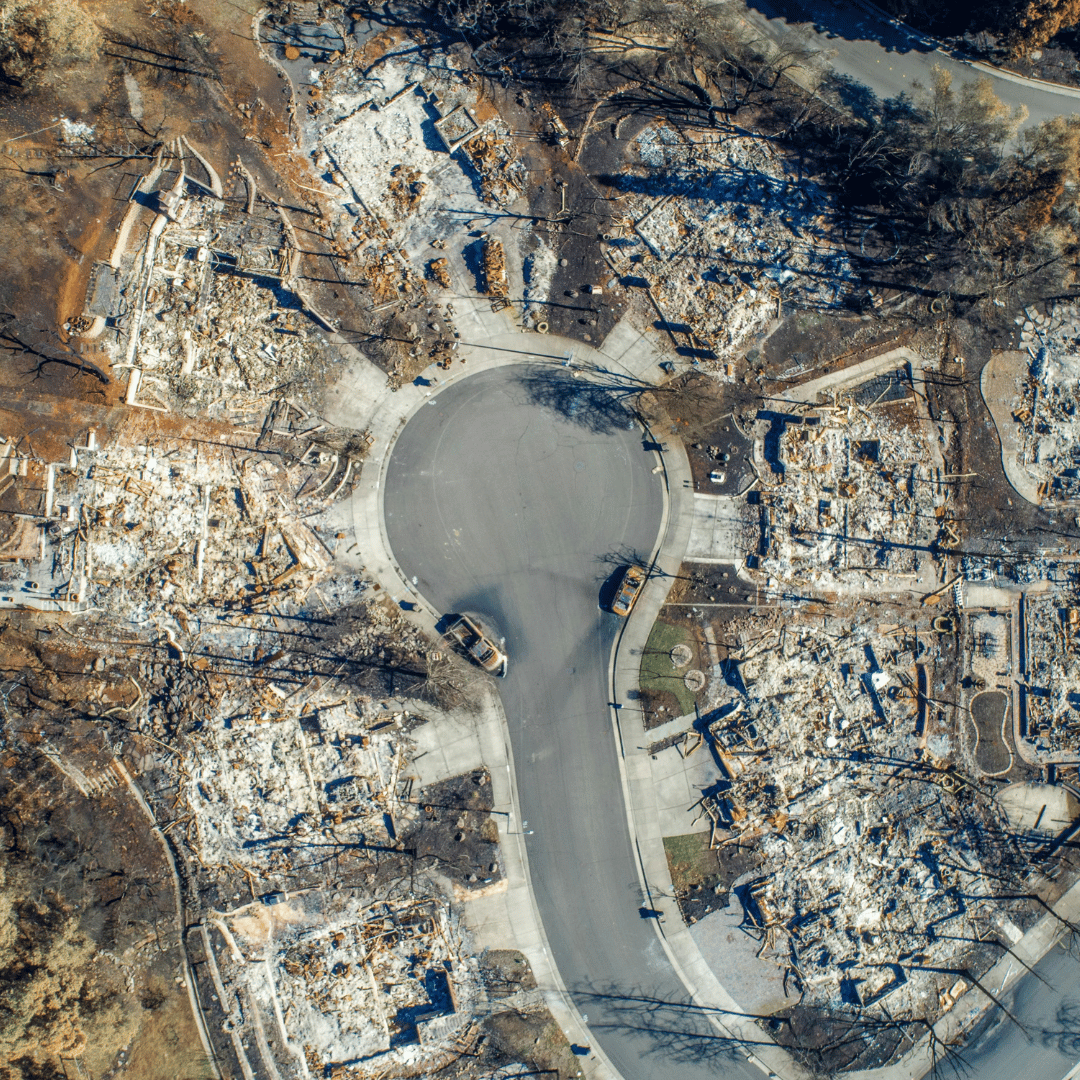
Extreme weather isn’t the only cause of blackouts in the US. Wildfires are also a major cause of grid failures, which is why California is one of the most affected states. Unfortunately, wildfires and their associated power outages are also expected to rise in frequency.
Aging infrastructure is also a problem. Nearly ⅔ of the US power transmission lines are over 25 years old, making them vulnerable to grid failures. Increased demand, as more people use air conditioning during heat waves, only adds to the problem. The age of the power system also makes it more vulnerable to cyber attacks and sabotage.
One of the worst-case scenarios for the US is an electromagnetic pulse (EMP) event such as a solar flare. This could potentially take out the entire power system and even render electronics unusable.
What Happens During a Long-Term Power Outage—The Immediate Impact and Domino Effect
In most cases, the immediate effects of a blackout are mild. Sure, you might not be able to make your coffee or charge your phone, but they aren’t life-threatening. Keep in mind that there are currently 330 million people in the world who live without power. Their standard of living is much lower than what we are used to in the USA, but they manage.
The real problem is when blackouts last for prolonged periods because our infrastructure relies on power. This domino effect and resulting infrastructure collapse can be deadly.
Here are some of the ways power outages can result in infrastructure collapse:
- Supply Chain Disruptions: Supermarkets, pharmacies, and gas stations quickly run out of supplies as people scramble to stockpile.
- Water Shortages: Water treatment facilities rely on electricity. When the grid is down, a boil warning may be in effect or, worse, water might not be available at all. Likewise, if you have a well, your pump won’t work without power.
- Hygiene Crises: If sewage and waste disposal systems stop, people may dispose of waste in unsafe ways, leading to disease outbreaks (such as the Haiti cholera outbreak that followed the earthquake of 2010).
- Security Concern: Rising theft and civil unrest, especially in metropolitan areas.
- Heating and Air Conditioning Fail: Without power, climate control disappears — a danger in freezing or extremely hot conditions.
How to Prepare for Long-Term Power Outages: A Step-By-Step Plan
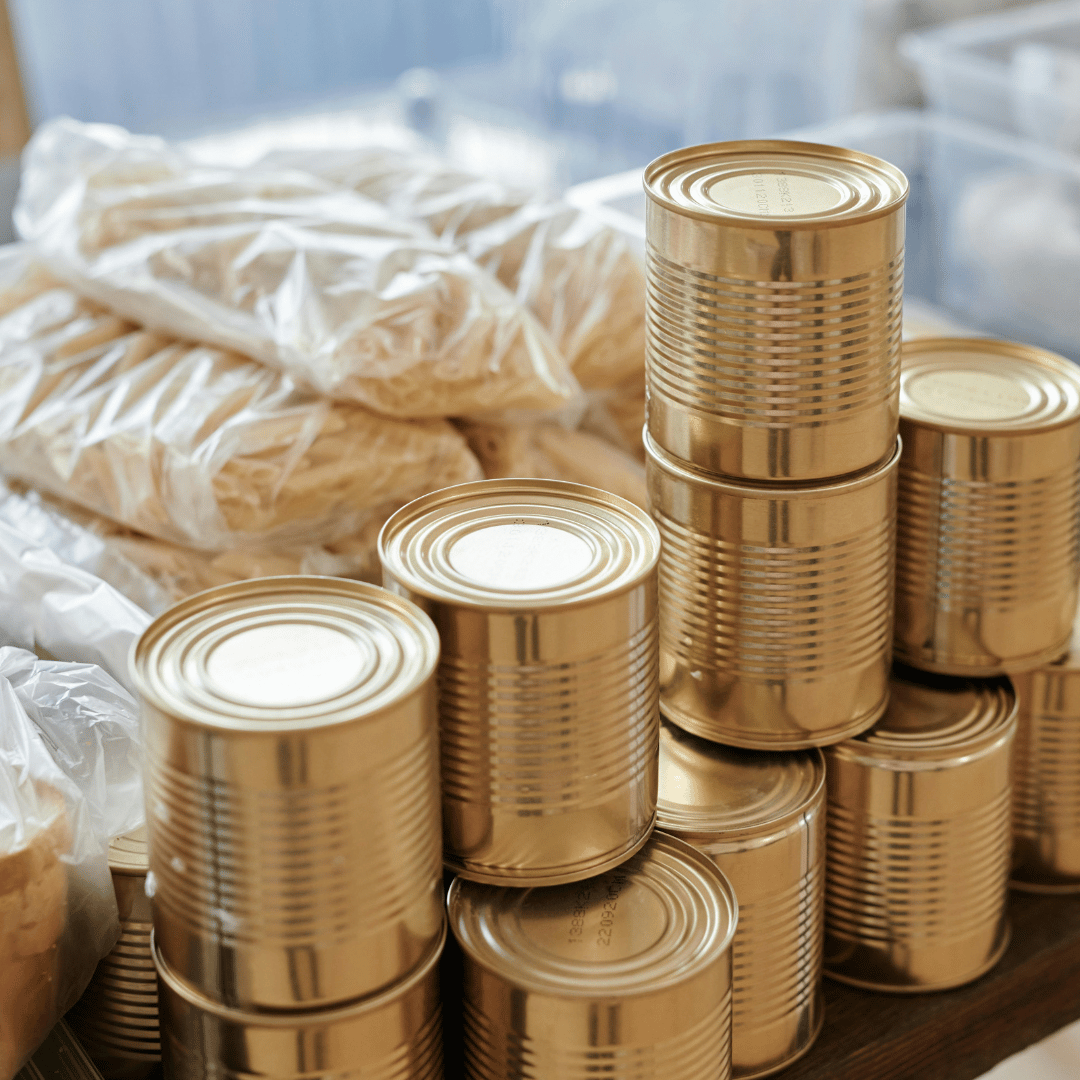
1. Start Small—Prepare for 72 Hours first, Then Expand
Before you start worrying about long-term survival, focus on being able to make it through a short blackout by stocking up on basic emergency supplies.
Make sure you have:
- Bottled water
- Non-perishable foods
- Emergency lighting (flashlights, candles, chemical lights and headlamps)
- A battery-powered or hand-crank radio
2. Get Your Bug-Out Essentials Ready
Having a Bug Out Bag (aka “BOB” or “Go Bag”) is one of the most important parts of disaster preparedness. It is especially important for grid-down situations in an urban environment since civil unrest could occur.
Staying put during a grid outage often makes more sense if you live in a rural environment. However, there are exceptions. For example, if you live in an area that doesn’t have access to water, it may make more sense to bug out to somewhere with more resources.
3. Determine Your Critical Medical Needs
If you or your family members have medical needs that rely on power, even a short-term blackout can be deadly. To prepare, you should:
- Identify needs, such as CPAP machines or refrigeration for insulin storage
- Calculate power consumption.
- Prepare generators or battery banks to meet these power needs.
4. Water Purification and Storage
We can only go three days without water. On top of that, water is required for essential needs like hygiene and cooking. So, water needs to be a priority for long-term power outage prepping.
- Manual Water Filters: Handheld filters like Sawyer Mini can clear sediments and pathogens from lakes, rivers, or rainwater.
- Water Purification Tablets or Drops: Chemical purifiers are lightweight, small, and effective at treating viruses as well as bacteria and cysts.
- Large Storage Containers and Rainwater Barrels: Fill and treat large barrels in advance and consider adding a rainwater collection system to keep your supply up.
5. Heating without Electricity
Hypothermia can become a major threat during prolonged winter blackouts. On top of that, freezing conditions can destroy your plumbing or crack your water storage tanks. To prepare, you’ll need:
- Off-Grid Heating Method: Ideally, you have at least two options in case you run out of fuel for the first one. Propane and wood stoves are popular, but even emergency candles can be used for heating.
- Fuel: You’ll need to do research about how to best stockpile fuel in a safe way, depending on where you live.
- Supplies to Create a “Warm Room”: It’s easier to keep a small, well-insulated room warm than your entire home. You’ll want supplies like wool blankets or space blankets to hang over windows and tape for sealing off drafts.
- CO Detector: Even when used properly, off-grid heating methods can result in carbon monoxide poisoning. Make sure you have a working detector and spare batteries for it.
- Thermal Clothing: You can get high-quality thermals at affordable prices at military surplus stores.
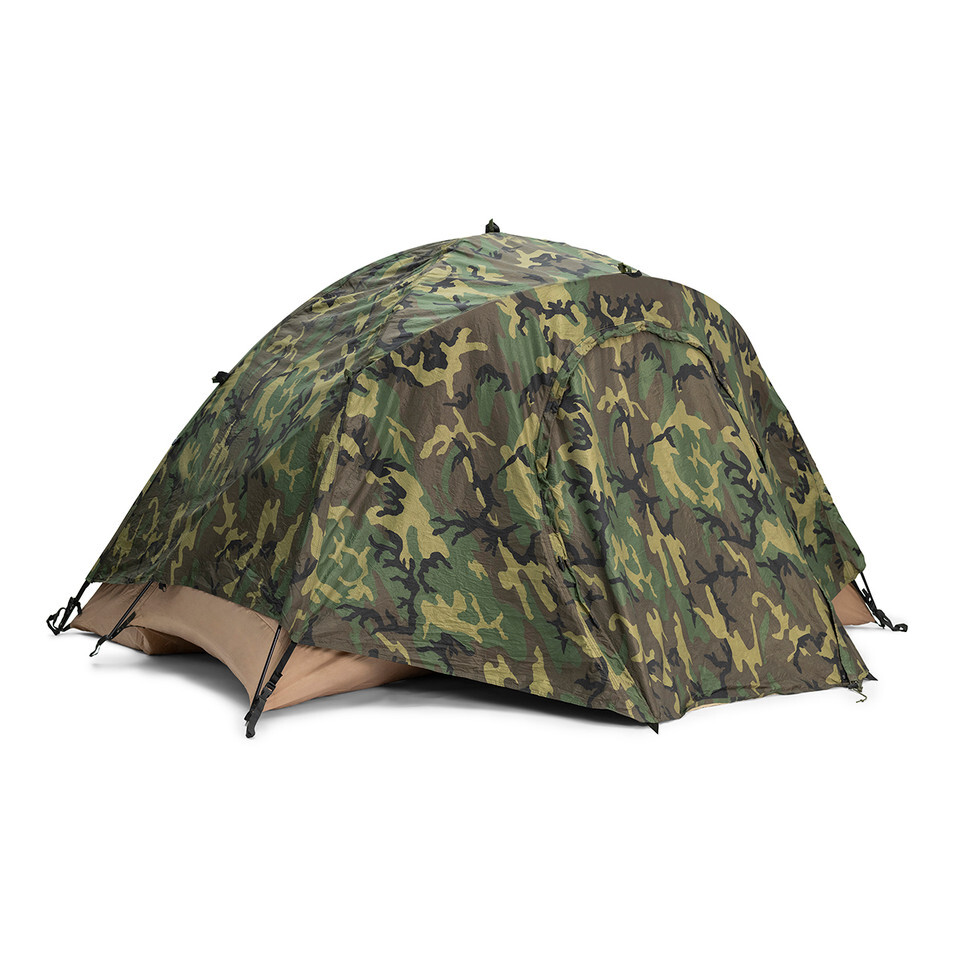
Pro Tip: You can turn a small 2-4 person tent into a warm room. Set one up inside your home to reduce your reliance on heating. Insulated mattresses and sleeping bags will make it even more comfortable.
6. Cooling during Power Outages
Extreme heat can be just as dangerous as freezing temperatures — especially for children, the elderly, or anyone with health issues. Without air conditioning or fans, you need a fallback plan to stay cool when the power is out.
- Supplies for Blocking Sunlight: Keep curtains, blinds, or heavy drapes closed during the day to block solar gain. You can hang a space blanket or a white sheet outside a window to reflect the sun’s rays.
- Create Airflow: Open windows strategically in the evening or at night to allow a cross-breeze. If you have a battery-powered or hand-crank fan, use it to move air through your home.
- Reduce Heat-Generating Activities: Avoid cooking indoors during the day. If you need to boil water or prepare food, use a portable grill or camp stove outside.
- Improve Air Circulation Naturally: Hang a wet sheet in a window or doorway. As air blows through it, the water evaporates and cools the room—a low-tech form of air conditioning.
7. Food Security
When the power goes out, your perishable foods are at risk of going bad. At the same time, grocery stores might not be open or will be out of stock as everyone rushes to grab whatever is left. This is why you need a food plan for getting you through a long-term power outage.
- Keeping Perishable Foods Safe: Foods in your fridge will stay good for about 4 hours if you keep it closed. Frozen foods last longer–up to 48 hours if it’s full, or 24 hours if it’s half full. Fill all available space in your freezer with water bottles or jugs — it will help the food last longer and the ice water can be used for drinking when it melts.
- Using a Generator for Your Fridge/Freezer: If you have a generator, you’ll need to decide whether it’s worth using to keep your perishables cool. During long-term blackouts, it may be better to save the generator for more critical needs.
- Focus on Non-Perishables: But think twice before stockpiling foods that require extensive cooking, such as pastas or dry beans–especially if you have limited fuel for your emergency stove. Instead, focus on emergency foods that don’t require cooking. Meals Ready to Eat (MREs) are a great solution.
- Alternative Storage Solutions: If temperatures outside are freezing, you can store perishables in a sheltered spot outside. If you have the space, you might want to consider making a root cellar for keeping foods cool during warm-weather blackouts.
8. Home Security Measures for Power Outages
During a long-term power outage, your home is more vulnerable. Without alarm systems, surveillance cameras, or proper lighting, it can become a target for theft or break-ins — especially if civil unrest starts to rise as supplies run out. You can take these steps to keep your home safe.
- Lock Down Your Home: Make sure all doors and windows are locked and reinforced if necessary. Security film, additional locks, or wooden boards can help fortify weak points.
- Non-Lethal Deterrents: Bright battery-powered or solar-powered motion sensor lighting and alarm signals can help deter intruders. However, the light could also attract attention, so you need to weigh the benefits and risks.
- Stay Aware: Make sure you have a battery-powered or hand-crank emergency radio to stay informed about nearby disturbances or emergencies. Communication lets you respond quickly if trouble starts in your area.
9. Develop Off-Grid Living Skills
Having a stockpile of supplies is a great start—but it's your skills that will keep you alive when the power stays off for extended periods of time and resources become scarce. The more you know, the less you need. These skills are also crucial for surviving other types of disasters and improving your overall preparedness.
- Fire Making: Master a few methods–including making fires in wet conditions—so you can stay warm, boil water, and cook without electricity.
- Foraging, Fishing and Hunting: Learn which wild plants are safe to eat and how to efficiently catch freshwater fish. Small game and fishing can become a key food source when stores are closed.
- Food Preservation Canning, drying, fermenting, and curing are all time-tested methods to make food last without refrigeration. A few jars of home-canned produce or jerky can make a huge difference during a crisis.
- Basic Repairs: Blackouts don’t directly cause damage to your home. However, the cause of the outage–such as a winter storm or hurricane–may cause problems. Make sure you have the knowhow to fix problems like leaky pipes or holes in the roof.
10. Perform a “Dry Run”
A plan untested is a plan untrusted. To make sure you are actually prepared, you need to do a “dry run” of it—such as trying to go without power for a long weekend.
This dry run will help you find holes in your plan, such as missing supplies or tools that don’t work as expected. It’s better to find these problems now when you still have time to fix them than in a real crisis!

